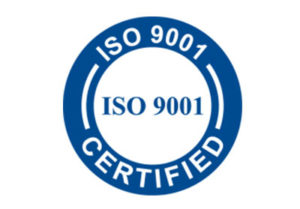Liberty Electronic’s Industry Outlook series analyzes the market for trends suppliers at all levels of the supply chain should watch. In this installment, we break down Aerospace and Defense trends.
With a difficult 2020 behind us, this year’s relaxed COVID-19 restrictions herald the airline industry’s long road to recovery with returning travel. Though the commercial sector faces some challenges, there is hope for aerospace manufacturers and suppliers with solid industry projections in the defense sector due to defense spending remaining largely unaffected in countries across the world. The global political climate and recovering pandemic economies will mean there is much to be seen in 2021, but aerospace and defense (A&D) companies and suppliers can be on the lookout for three major trends this coming year.
Space exploration and military activity is projected to remain stable.
The pandemic did not shake any eyes from space with lots of activity planned for 2021. After a tough year for space exploration with many launches postponed, this year will be busy as space programs across the globe adapt to delayed launch dates and declining launch costs. Space investments remained steady at 25.6 billion in 2020, meaning more contracts can be expected in 2021 after some large deals in 2020. June saw a 187 million dollar deal between NASA and Northrop Grumman to begin design and execution of the Habitation and Logistics Outpost projected to launch in 2023 and a 160 million dollar deal between the Pentagon and SpaceX to launch two Falcon 9 rockets by the end of 2023. Multiple contracts have been awarded to A&D companies for defense projects in spite of a decrease in deal activity due to the pandemic, though that is expected to increase as 2020’s uncertainty abates. Already the industry has seen some major contracts such as the U.S. Air Force and Lockheed Martin for F-16 Fighting Falcon, the U.S Army and Honeywell for CH-47 Chinook helicopters, Flight Control Systems and Aerovironment for Raven unmanned aircraft and more. From these contracts suppliers can expect a steady revenue stream from continued military and space exploration efforts.
Commercial air travel anticipates a slow and steady recovery.
Though it may be several years until air traffic returns to pre-pandemic levels, there has been an increase since the beginning of the pandemic and as an effective vaccine becomes available. This adjustment in the market means 2021 will be an adjustment year for this side of the industry. Now, leisure travel appears to be leading demand as the business sector continues to refrain from any kind of travel, though overall travel is still 50 percent lower than pre-pandemic levels as of April 9. This cut in passenger traffic has caused airlines to cancel or postpone investment projects, narrowing their focus on near-term cash flow in order to pay off debts and create a security fund for the future. Fewer deals will be made with aerospace and defense manufacturers in 2021, though this number may continue to grow as airlines transition into this new type of market left in the wake of COVID-19.
Aerospace supply chains can expect accentuated focus on resilience.
With only 60-70 percent of aircraft utilized around the globe since the pandemic began, manufacturers will be hard pressed to win contracts for new projects. This means companies will need to try new methods of ensuring the supply chain’s efficiency. An outlook report from Deloitte suggests that companies can use strategies like reshoring, vertical integration and an increase in cyber defenses as methods of transforming the supply chain into a more resilient network. The continued restrictions on international traffic could see reshoring as a preventative measure in the instance of another pandemic wave shutting down borders, while increased cost competition for commercial contracts could see a push for offshoring. A push towards the digital appears to be inevitable if A&D companies expect to succeed in future sustainability. This means the industry will be more data-driven, have a focus on implementing and creating new technologies and develop a more collaborative atmosphere to achieve these goals.
Moving Forward in a Post-Pandemic World
With a continued transition in the commercial sector, aerospace and defense manufacturers and companies will increase their focus on space exploration and government contracts. Increased military and technological investments from government entities will mean a consistent market from government spending while the commercial sector gets back on its feet. Because of this market shift, companies will need to ensure the supply chain’s resilience and dynamism in order to stay relevant. Implementing different and creative strategies will be the industry’s way to identify top players and solidify their leadership in the future. In the meantime, there remains much to be seen in 2021 as the effects of the pandemic continue to surface.





